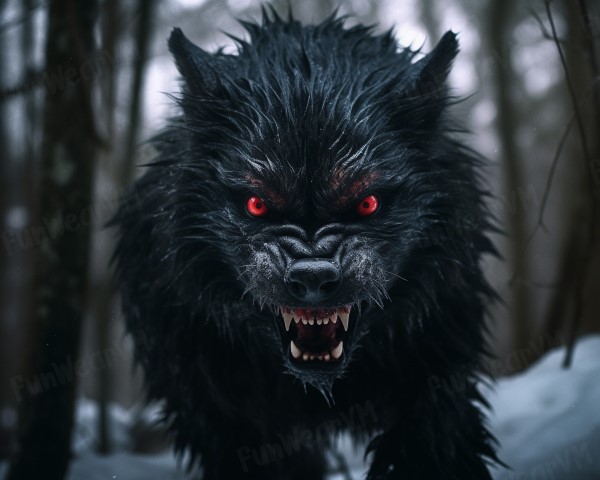
Shunka Warak’in is a name given to a mysterious creature that has been reported to roam the plains of Montana for centuries. The name means “carries off dogs” in the Ioway language, and it describes a wolf-like animal that has a dark coat, high shoulders, and a slanted back. Some say it looks like a hyena, and others say it sounds like a person when it is killed.
The legend of the Shunka Warak’in goes back to the Native American tribes that lived in the region, such as the Ioway, the Crow, and the Blackfeet. They believed that the creature was a powerful and dangerous spirit that could steal their dogs and attack their livestock. They also used its hide as a sacred talisman in battle.
The first documented sighting of the Shunka Warak’in by white settlers occurred in 1886, when a rancher named Israel Ammon Hutchins shot and killed one near Henry Lake, Idaho. He traded the carcass to a taxidermist named Joseph Sherwood, who mounted it and displayed it in his grocery store. Sherwood called it a “ringdocus”, but no one knew what it really was.
The ringdocus remained in Sherwood’s store until the 1980s, when it disappeared. Many cryptozoologists, who study unknown animals, tried to find it and examine it, but they had no luck. It was not until 2007 that Jack Kirby, the grandson of Hutchins, tracked it down to the Idaho Museum of Natural History in Pocatello. He arranged for it to be loaned to the Madison Valley History Museum in Montana, where it was finally put on public display.
The ringdocus is still a mystery today. No DNA testing has been done on it, and no one knows if it is a new species, a hybrid, or a mutation. Some experts think it might be related to the dire wolf, an extinct relative of the modern wolf that lived during the Ice Age. Others think it might be a surviving specimen of Amphicyon, an ancient carnivore that resembled a bear-dog.
Whatever it is, the Shunka Warak’in is a fascinating example of how folklore and science can intersect. It is also a reminder that there might be more secrets hidden in the wilds of Montana than we can imagine.
References:
